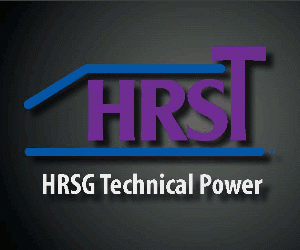The Combined Cycle Users Group (CCUG) opened Day One of its 2021 virtual conference with a roundtable discussion on confined-space safety. Arguably, it’s a topic perhaps even more essential to onsite staff as other responsibilities shift to offsite personnel, contractors, and OEM reps.
The discussion was facilitated by Steve Hilger, plant manager at Dogwood Energy (operated by NAES); Jonathan Miller, maintenance manager at Cleco’s Acadia Power Station; and Aaron Kitzmiller, plant engineer at Luminant’s Fayette Power Plant. All three serve on the CCUG steering committee.
Surprisingly, there is no accepted way to classify “confined space.” The OSHA definition, for compliance purposes, has three criteria: space is large enough and configured so that a worker can enter bodily, has limited or restricted means for entry or exit, and is not designed for continuous employee occupancy. The gray areas here were underscored by the fact that the representatives of these three facilities “saw things differently.”
One of the panelist’s noted that many process plants classify all enclosed spaces as confined. In other words, they do not distinguish between a permit-required or non-permit-required confined space.
Much of the discussion focused on three options for rescue teams: third party offsite, trained onsite, and local fire department. There are pros and cons with each. Examples: the local fire department is experienced with rescue events but may not be able to respond in a timely manner, typically within 15 minutes; an onsite team may be most familiar with the facility but the additional responsibilities may be a burden on shrinking staffs; and a third-party team may have its own equipment but not able to respond on short notice.
The panelists created a list of “possible best practices”:
-
- Sign in and out for all (permit and non-permit) confined space work—described as a nuisance but necessary.
- At least one continuous air monitor per team in a confined space.
- Create and review the rescue plan before entry.
- Document the time-weighted average personal air sampling pump readings when welding, to understand potential for contaminants.
- Use “Rite in the Rain” or equivalent all-weather paper to print permit materials and avoid the problems associated with using off-the-shelf paper when it gets wet.
- Invite local fire department personnel to the site to get familiar with the spaces.
- Use tubes (familiar in real estate) with labels and rare earth magnets to house confined space permits.
- Step through “what ifs” before starting the project.
- Test communication devices.
A few best practices which might be added based on the Q&A accompanying this session are the following:
-
- Make sure contractors understand the distinction between permit- and non-permit-required confined spaces, and defer to the more rigorous one.
- Perform audits on confined spaces early in the outage.
- Know where everyone is working to avoid issues with falling objects.
[SIDEBAR]
Site map helps track confined-space status
Dogwood Energy has proactively shared its safety best practices with colleagues for years via CCJ’s editorial pages. One, not discussed in detail during the confined-space roundtable but worth revisiting here, is described below. It protects against entry into a confined space after LOTO clearance. The example given was an HRSG door left open following an outage.
Dogwood has over 150 confined spaces to keep track of, challenging the responsible individuals. Michael Davis, a control room operator (CRO) and a member of the plant’s safety committee, advocated for a visual way to account for confined-space status in the control room. After reviewing different ways to keep an eye on the confined spaces, he noticed that most of the solutions relied on technology that increased costs as well as the workload of the CRO. Davis focused his task on finding a low-risk, low-cost, low-technology, high-results outcome.
His idea was to create a site map showing the major equipment and some of the underground systems on a white magnetic board that included all the plant confined spaces. This map would be in the control room above the LOTO cabinet (photo).
Davis worked with NAES drafting to develop a simplified site plan for the Missouri plant. In addition to the major equipment and underground information, the 45 × 45-in. map also includes the following:
-
- Safety showers in green.
- Tornado shelters.
- Water storage tanks and capacities.
- Manholes with system identification and numbers.
- Electrical manways.
- Hazardous chemical locations.
For work requiring entry into a confined space, the CRO moves the magnetic label for the associated confined space from the label storage board (right of the window in the photo) to the left-hand side of the site map and then places a red magnetic dot at the location of the confined space on the map.
This provides Dogwood personnel a visual of the approximate location of open confined spaces at any given time. After a confined space has been closed and returned to its normal state, the label and dot are removed and returned to the storage board. Keeping the process simple enables its success.
The map also provides a visual representation of the plant to facilitate discussions among plant personnel and contractors and to show evacuation routes and muster points, and all door swings.
The confined-space map, in use for well over a year, is a safety and awareness win for both employees and contractors.
[SIDEBAR CAPTION]
Confined-space map is mounted above LOTO cabinet and alongside the label storage board





